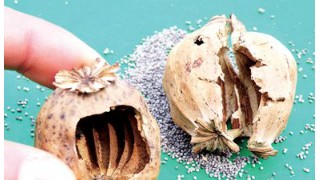化疗禁忌证为:①ECOG PS评分>2,Child-Pugh评分>7分;②白细胞计数<3.0 X 109/L或中性粒细胞计数<l.5×109/L,血小板计数<60×109/L,血红蛋白<90g/L;③肝、肾功能明显异常,氨基转移酶(AST或ALT)>5倍正常值和/或胆红素显著升高>2倍正常值,血清白蛋白<28g/L,肌酐(Cr)≥正常值上限,肌酐清除率(CCr)<50ml/min;④具有感染发热、出血倾向、中-大量腹腔积液和肝性脑病。
其他药物:三氧化二砷治疗中晚期原发性肝癌具有一定的姑息治疗作用113(证据等级3)。在临床应用时,应注意监测肝肾毒性。
(3)免疫治疗:
肝癌免疫治疗主要包括免疫调节剂(干扰素α、胸腺肽α1(胸腺法新)等)65,114、免疫检查点阻断剂(CTLA-4阻断剂、PD-1/PD-L1阻断剂等)、肿瘤疫苗(树突细胞疫苗等)、细胞免疫治疗(细胞因子诱导的杀伤细胞,即CIK)113,115。这些治疗手段均有一定的抗肿瘤作用,但尚待大规模的临床研究加以验证。
(4)中医药:
中医中药治疗能够改善症状,提高机体的抵抗力,减轻放化疗不良反应,提高生活质量。除了采用传统的辨证论治、服用汤剂之外,我国药监部门业已批准了若干种现代中药制剂如槐耳颗粒、康莱特、华蟾素、榄香烯、肝复乐等用于治疗肝癌116,117,具有一定的疗效,病人的依从性、安全性和耐受性均较好(证据等级4)。但是,这些药物尚缺乏高级别的循证医学证据加以充分支持。
(5)全身治疗的疗效评估:
对于化疗病人,仍然采用Recist 1.1标准,可同时参考血清学肿瘤标记(AFP)以及肿瘤坏死程度的变化,一般在治疗期间每6-8周进行影像学评估,同时通过动态观察病人的症状、体征、治疗相关不良反应进行综合评估。鉴于索拉非尼、TACE治疗很少能改变肿瘤大小,故建议采用以肿瘤血管生成和密度改变为基础的疗效评估标准(mRecist标准)118,119。对于免疫治疗的评价,可参照irRC (immune-related response criteria)标准120,121。
2.抗病毒治疗及其他保肝治疗:
合并有乙肝病毒感染且复制活跃的肝癌病人,口服核苷(酸)类似物抗病毒治疗非常重要。宜选择强效低耐药的药物如恩替卡韦、替比夫定或替诺福韦脂等。TACE治疗可能引起乙型肝炎病毒复制活跃,目前推荐在治疗前即开始应用抗病毒药物。抗病毒治疗还可以降低术后复发率69,70(证据等级1)。因此,抗病毒治疗应贯穿肝癌治疗的全过程。
肝癌病人在自然病程中或者治疗过程中可能会伴随肝功能异常,因此应及时适当的应用保肝药物,如异甘草酸镁注射液(甘草酸二铵肠溶胶囊)、复方甘草酸苷、还原型谷胱甘肽、多磷脂酰胆碱等;抗炎治疗药物如广谱水解酶抑制剂乌司他丁等;利胆类药物如腺苷蛋氨酸、熊去氧胆酸等。这些药物可以保护肝功能、提高治疗安全性、降低并发症、改善生活质量。
3.对症支持治疗:
适度的康复运动可以增强机体的免疫功能。另外,应加强对症支持治疗,包括在晚期肝癌病人中的积极镇痛、纠正贫血、纠正低白蛋白血症、加强营养支持,控制合并糖尿病病人的血糖,处理腹水、黄疸、肝性脑病、消化道出血等伴随症状。
对于晚期肝癌病人,应理解病人者及家属的心态,采取积极的措施调整其相应的状态,把消极心理转化为积极心理,通过舒缓疗护让其享有安全感、舒适感而减少抑郁与焦虑。
五、附录:
附录一:证据等级(牛津循证医学中心2011版)
(临床)问题 步骤1 步骤2 步骤3 步骤4 步骤5
(等级1*) (等级2*) (等级3*) (等级4*) (等级5*)
这个疾病有多普遍?(患病率) 当地的,当前的随机样本调查(或普查) 与当地情况相匹配调查的系统综述** 当地的,非随机样本调查** 病例系列** N/A
诊断或监测试验是否准确(诊断) 一致地应用了参考标准和盲法的横断面研究的系统综述 一致地应用了参考标准和盲法的横断面研究 非连续病例研究,或研究未能一致地应用参考标准** 病例对照研究,或应用了差的或非独立的参考标准** 基于机制的推理
若不加这个治疗会发生什么?(预后) 起始队列研究的系统综述 起始队列研究 队列研究或随机研究的对照组** 病例系列或病例对照研究,或低质量预后队列研究** N/A
这个治疗有用吗? (治疗效益) 随机试验或单病例随机对照试验的系统综述 随机试验或具有巨大效果的观察性研究 非随机对照队列/随访研究** 病例系列,病例对照研究,或历史对照研究** 基于机制的推理
这个治疗常见的伤害是什么(治疗伤害) 随机试验的系统综述,巢式病例对照研究的系统综述,针对你所提临床问题病人的n-of-1试验,具有巨大效果的观察性研究 单个随机试验或(特殊地)具有巨大效果的观察性研究 非随机对照队列/随访研究(上市后监测)提供,足够数量来排除常见的伤害(对长期伤害需要足够长的随访时间)** 病例系列,病例对照研究,或历史对照研究** 基于机制的推理
这个治疗少见的伤害是什么?(治疗伤害) 随机试验或N-of-1试验的系统综述 随机试验或(特殊地)具有巨大效果的观察性研究
这个试验(早期发现)值得吗? (筛查) 随机研究的系统综述 随机试验 非随机对照队列/随访研究** 病例系列,病例对照研究,或历史对照研究** 基于机制的推理
* 根据研究质量,精确度,间接性,各个研究间不一致,或绝对效应值小,证据等级会被调低;若效应值很大,等级会被上调
**系统综述普遍地优于单个研究
附录二:原发性肝癌及相关病变的诊断名词(参照2010版WHO
肝细胞癌癌前病变
大细胞改变;小细胞改变;低度异型增生结节;高度异型增生结节;
异型增生灶;肝细胞腺瘤b
肝细胞癌
特殊亚型
硬化型;淋巴上皮瘤样型;富脂型;肉瘤样型;未分化型
肝细胞癌,纤维板层型
肝内胆管癌癌前病变
胆管上皮内瘤变(低级别和高级别BilIN);胆管内乳头状肿瘤;
胆管黏液性囊性肿瘤
肝内胆管癌
腺癌;肉瘤样癌
混合型肝细胞癌-胆管癌
双表型肝细胞癌
肝母细胞瘤
癌肉瘤
b :WH0将肝细胞腺瘤分为HNFlα失活型、β-catenin活化型、炎症型和未分类型等4种亚型,其中瘤体较大且伴β-catenin活化型肝细胞腺瘤的恶变风险可能会明显增加。
附录三:原发性肝癌的组织学分级
肝细胞癌Edmondson-Steiner分级:
Ⅰ级:分化良好,核/质比接近正常,瘤细胞体积小,排列成细梁状。
Ⅱ级:细胞体积和核/质比较Ⅰ级增大,核染色加深,有异型性改变,胞浆呈嗜酸性颗粒状,可有假腺样结构。
Ⅲ级:分化较差,细胞体积和核/质比较Ⅱ级增大,细胞异型性明显,核染色深,核分裂多见。
Ⅳ级:分化最差,胞质少,核深染,细胞形状极不规则,黏附性差,排列松散,无梁状结构。
附录四:肝癌诊断路线图
典型表现:指增强动脉期(主要动脉晚期)病灶明显强化,门脉或延迟期强化下降,呈“快进快出”强化方式。
不典型表现:缺乏动脉期病灶强化或者门脉和延迟期强化没有下降或不明显,甚至强化稍有增加等。
动态MRI:指磁共振动态增强扫描。
动态增强CT:指动态增强三期或四期扫描。
CEUS:指使用超声对比剂实时观察正常组织和病变组织的血流灌注情况。
EOB-MRI:指Gd-EOB-DTPA增强磁共振扫描。
AFP(+): 超过血清AFP检测正常值。
附录五:肝癌临床分期及治疗路线图
附录六:《原发性肝癌诊疗规范(2017年版)》编写专家委员会
名誉主任委员:吴孟超 汤钊猷 刘允怡 陈孝平 王学浩 孙燕 郑树森
主任委员: 樊嘉
副主任委员:秦叔逵 沈锋 李强 董家鸿 周俭 王伟林 蔡建强 滕皋军
外科学组组长:周俭; 副组长:杨甲梅 别平 刘连新 文天夫
介入治疗学组组长:王建华; 副组长:韩国宏 王茂强 刘瑞宝 陆骊工
内科及局部治疗组组长:秦叔逵; 副组长:任正刚 陈敏山 曾昭冲 梁萍
影像学组组长:曾蒙苏; 副组长:梁长虹 陈敏 严福华 王文平
病理学组组长:丛文铭; 副组长:纪元
委员(按姓氏拼音排序):
成文武 戴朝六 荚卫东 李亚明 李晔雄 梁 军 刘天舒 吕国悦 毛一雷 任伟新 石洪成 孙惠川 王文涛 王晓颖 邢宝才 徐建明 杨建勇 杨业发
叶胜龙 尹震宇 张博恒 张水军 周伟平 朱继业
秘书长: 孙惠川 王征
秘 书: 刘嵘 史颖弘 肖永胜 代智
七、参考文献:
1. Torre LA, Bray F, Siegel RL, Ferlay J, Lortet-Tieulent J, Jemal A. Global cancer statistics, 2012. CA Cancer J Clin 2015;65:87-108.
2. Chen W, Zheng R, Baade PD, et al. Cancer statistics in China, 2015. CA Cancer J Clin 2016;66:115-32.
3. Zhang BH, Yang BH, Tang ZY. Randomized controlled trial of screening for hepatocellular carcinoma. J Cancer Res Clin oncol 2004;130:417-22.
4. Zeng MS, Ye HY, Guo L, et al. Gd-EOB-DTPA-enhanced magnetic resonance imaging for focal liver lesions in Chinese patients: a multicenter, open-label, phase III study. Hepatobiliary Pancreat Dis Int 2013;12:607-16.
5. Lee YJ, Lee JM, Lee JS, et al. Hepatocellular carcinoma: diagnostic performance of multidetector CT and MR imaging-a systematic review and meta-analysis. Radiology 2015;275:97-109.
6. Ichikawa T, Saito K, Yoshioka N, et al. Detection and characterization of focal liver lesions: a Japanese phase III, multicenter comparison between gadoxetic acid disodium-enhanced magnetic resonance imaging and contrast-enhanced computed tomography predominantly in patients with hepatocellular carcinoma and chronic liver disease. Invest Radiol 2010;45:133-41.
7. 丁莺, 陈财忠, 饶圣祥, 曾蒙苏. Gd+-EOB-DTPA与Gd+-DTPA增强磁共振检查肝细胞癌的对照研究. 中华普通外科杂志 2013;28:682-5.
8. Yoo SH, Choi JY, Jang JW, et al. Gd-EOB-DTPA-enhanced MRI is better than MDCT in decision making of curative treatment for hepatocellular carcinoma. Ann Surg oncol 2013;20:2893-900.
9. Chen CZ, Rao SX, Ding Y, et al. Hepatocellular carcinoma 20 mm or smaller in cirrhosis patients: early magnetic resonance enhancement by gadoxetic acid compared with gadopentetate dimeglumine. Hepatol Int 2014;8:104-11.
10. Chen BB, Murakami T, Shih TT, et al. Novel imaging diagnosis for hepatocellular carcinoma: consensus from the 5th Asia-Pacific Primary Liver Cancer Expert Meeting (APPLE 2014). Liver Cancer 2015;4:215-27.
11. Merkle EM, Zech CJ, Bartolozzi C, et al. Consensus report from the 7th International Forum for Liver Magnetic Resonance Imaging. Eur Radiol 2016;26:674-82.
12. Park JW, Kim JH, Kim SK, et al. A prospective evaluation of 18F-FDG and 11C-acetate PET/CT for detection of primary and metastatic hepatocellular carcinoma. J Nucl Med 2008;49:1912-21.
13. Lin CY, Chen JH, Liang JA, Lin CC, Jeng LB, Kao CH. 18F-FDG PET or PET/CT for detecting extrahepatic metastases or recurrent hepatocellular carcinoma: a systematic review and meta-analysis. Eur J Radiol 2012;81:2417-22.
14. Boellaard R, Delgado-Bolton R, Oyen WJ, et al. FDG PET/CT: EANM procedure guidelines for tumour imaging: version 2.0. Eur J Nucl Med Mol Imaging 2015;42:328-54.
15. Boellaard R, O'Doherty MJ, Weber WA, et al. FDG PET and PET/CT: EANM procedure guidelines for tumour PET imaging: version 1.0. Eur J Nucl Med Mol Imaging 2010;37:181-200.
16. Wahl RL, Jacene H, Kasamon Y, Lodge MA. From RECIST to PERCIST: Evolving Considerations for PET response criteria in solid tumors. J Nucl Med 2009;50 Suppl 1:122S-50S.
17. Chalian H, Tore HG, Horowitz JM, Salem R, Miller FH, Yaghmai V. Radiologic assessment of response to therapy: comparison of RECIST Versions 1.1 and 1.0. Radiographics 2011;31:2093-105.
18. Ferda J, Ferdova E, Baxa J, et al. The role of 18F-FDG accumulation and arterial enhancement as biomarkers in the assessment of typing, grading and staging of hepatocellular carcinoma using 18F-FDG-PET/CT with integrated dual-phase CT angiography. Anticancer Res 2015;35:2241-6.
19. Lee JW, Oh JK, Chung YA, et al. Prognostic Significance of 18F-FDG Uptake in Hepatocellular Carcinoma Treated with Transarterial Chemoembolization or Concurrent Chemoradiotherapy: A Multicenter Retrospective Cohort Study. J Nucl Med 2016;57:509-16.
20. Hyun SH, Eo JS, Lee JW, et al. Prognostic value of 18F-fluorodeoxyglucose positron emission tomography/computed tomography in patients with Barcelona Clinic Liver Cancer stages 0 and A hepatocellular carcinomas: a multicenter retrospective cohort study. Eur J Nucl Med Mol Imaging 2016.
21. Bertagna F, Bertoli M, Bosio G, et al. Diagnostic role of radiolabelled choline PET or PET/CT in hepatocellular carcinoma: a systematic review and meta-analysis. Hepatol Int 2014;8:493-500.
22. Cheung TT, Ho CL, Lo CM, et al. 11C-acetate and 18F-FDG PET/CT for clinical staging and selection of patients with hepatocellular carcinoma for liver transplantation on the basis of Milan criteria: surgeon's perspective. J Nucl Med 2013;54:192-200.
23. Zhang Y, Shi H, Li B, Cai L, Gu Y, Xiu Y. The added value of SPECT/spiral CT in patients with equivocal bony metastasis from hepatocellular carcinoma. Nuklearmedizin 2015;54:255-61.
24. Forner A, Vilana R, Ayuso C, et al. Diagnosis of hepatic nodules 20 mm or smaller in cirrhosis: Prospective validation of the noninvasive diagnostic criteria for hepatocellular carcinoma. Hepatology 2008;47:97-104.
25. 陈孝平. 肝恶性肿瘤. In: 陈孝平, ed. 外科学. 第2版 ed. 北京: 人民卫生出版社; 2010:620.
26. Westra WH, Hruban RH, Phelps TH, Isacson C. Surgical Pathology Dissection: An Illustrated Guide. New York: Springer; 2003.
27. Nara S, Shimada K, Sakamoto Y, et al. Prognostic impact of marginal resection for patients with solitary hepatocellular carcinoma: evidence from 570 hepatectomies. Surgery 2012;151:526-36.
28. 丛文铭. 肝细胞性恶性肿瘤. In: 丛文铭, ed. 肝胆肿瘤外科病理学. 1 ed. 北京: 人民卫生出版社; 2015:276-320.
29. Scheuer PJ. Classification of chronic viral hepatitis: a need for reassessment. J Hepatol 1991;13:372-4.
30. 病毒性肝炎防治方案. 中华传染病杂志 2001;19:56-62.
31. Guidelines for the Prevention, Care and Treatment of Persons with Chronic Hepatitis B Infection. Geneva2015.
32. Rodriguez-Peralvarez M, Luong TV, Andreana L, Meyer T, Dhillon AP, Burroughs AK. A systematic review of microvascular invasion in hepatocellular carcinoma: diagnostic and prognostic variability. Ann Surg oncol 2013;20:325-39.
33. 中国抗癌协会肝癌专业委员会, 中华医学会肝病学分会肝癌学组, 中国抗癌协会病理专业委员会, et al. 原发性肝癌规范化病理诊断指南(2015年版). 中华肝胆外科杂志 2015;21:145-51.
34. Eguchi S, Takatsuki M, Hidaka M, et al. Predictor for histological microvascular invasion of hepatocellular carcinoma: a lesson from 229 consecutive cases of curative liver resection. World J Surg 2010;34:1034-8.
35. Fujita N, Aishima S, Iguchi T, et al. Histologic classification of microscopic portal venous invasion to predict prognosis in hepatocellular carcinoma. Hum Pathol 2011;42:1531-8.
36. Iguchi T, Shirabe K, Aishima S, et al. New Pathologic Stratification of Microvascular Invasion in Hepatocellular Carcinoma: Predicting Prognosis After Living-donor Liver Transplantation. Transplantation 2015;99:1236-42.
37. Imamura H, Seyama Y, Kokudo N, et al. One thousand fifty-six hepatectomies without mortality in 8 years. Arch Surg 2003;138:1198-206; discussion 206.
38. Kubota K, Makuuchi M, Kusaka K, et al. Measurement of liver volume and hepatic functional reserve as a guide to decision-making in resectional surgery for hepatic tumors. Hepatology 1997;26:1176-81.
39. Bruix J, Castells A, Bosch J, et al. Surgical resection of hepatocellular carcinoma in cirrhotic patients: prognostic value of preoperative portal pressure. Gastroenterology 1996;111:1018-22.
40. Cescon M, Colecchia A, Cucchetti A, et al. Value of transient elastography measured with FibroScan in predicting the outcome of hepatic resection for hepatocellular carcinoma. Ann Surg 2012;256:706-12; discussion 12-3.
41. Chen MS, Li JQ, Zheng Y, et al. A prospective randomized trial comparing percutaneous local ablative therapy and partial hepatectomy for small hepatocellular carcinoma. Ann Surg 2006;243:321-8.
42. Liu PH, Hsu CY, Hsia CY, et al. Surgical Resection Versus Radiofrequency Ablation for Single Hepatocellular Carcinoma
43. Feng K, Yan J, Li X, et al. A randomized controlled trial of radiofrequency ablation and surgical resection in the treatment of small hepatocellular carcinoma. J Hepatol 2012;57:794-802.
44. Xu Q, Kobayashi S, Ye X, Meng X. Comparison of hepatic resection and radiofrequency ablation for small hepatocellular carcinoma: a meta-analysis of 16,103 patients. Sci Rep 2014;4:7252.
45. Yin L, Li H, Li AJ, et al. Partial hepatectomy vs. transcatheter arterial chemoembolization for resectable multiple hepatocellular carcinoma beyond Milan Criteria: a RCT. J Hepatol 2014;61:82-8.
46. Torzilli G, Belghiti J, Kokudo N, et al. A snapshot of the effective indications and results of surgery for hepatocellular carcinoma in tertiary referral centers: is it adherent to the EASL/AASLD recommendations?: an observational study of the HCC East-West study group. Ann Surg 2013;257:929-37.
47. Ishizawa T, Hasegawa K, Aoki T, et al. Neither multiple tumors nor portal hypertension are surgical contraindications for hepatocellular carcinoma. Gastroenterology 2008;134:1908-16.
48. Jiang HT, Cao JY. Impact of laparoscopic versus open hepatectomy on perioperative clinical outcomes of patients with primary hepatic carcinoma. Chin Med Sci J 2015;30:80-3.
49. Tang ZY, Uy YQ, Zhou XD, et al. Cytoreduction and sequential resection for surgically verified unresectable hepatocellular carcinoma: evaluation with analysis of 72 patients. World J Surg 1995;19:784-9.
50. Tang ZY, Yu YQ, Zhou XD, et al. Treatment of unresectable primary liver cancer: with reference to cytoreduction and sequential resection. World J Surg 1995;19:47-52.
51. Wakabayashi H, Okada S, Maeba T, Maeta H. Effect of preoperative portal vein embolization on major hepatectomy for advanced-stage hepatocellular carcinomas in injured livers: a preliminary report. Surg Today 1997;27:403-10.
52. Ogata S, Belghiti J, Farges O, Varma D, Sibert A, Vilgrain V. Sequential arterial and portal vein embolizations before right hepatectomy in patients with cirrhosis and hepatocellular carcinoma. Br J Surg 2006;93:1091-8.
53. 周俭,王征,孙健,等. 联合肝脏离断和门静脉结扎的二步肝切除术. 中华消化外科杂志, 2013;12:485-489
54. D'Haese JG, Neumann J, Weniger M, et al. Should ALPPS be Used for Liver Resection in Intermediate-Stage HCC? Ann Surg oncol 2016;23:1335-43..
55. Hong de F, Zhang YB, Peng SY, Huang DS. Percutaneous Microwave Ablation Liver Partition and Portal Vein Embolization for Rapid Liver Regeneration: A Minimally Invasive First Step of ALPPS for Hepatocellular Carcinoma. Ann Surg 2016;264:e1-2.
56. Liu CL, Fan ST, Lo CM, Tung-Ping Poon R, Wong J. Anterior approach for major right hepatic resection for large hepatocellular carcinoma. Ann Surg 2000;232:25-31.


 揭秘印度生意最火爆的代孕工厂
揭秘印度生意最火爆的代孕工厂 虫草中添加“伟哥”?专家称无检验依据
虫草中添加“伟哥”?专家称无检验依据 火锅、小龙虾越吃越想吃? 地餐馆调料检
火锅、小龙虾越吃越想吃? 地餐馆调料检 实拍妇科实习全程:女人越漂亮越容易得
实拍妇科实习全程:女人越漂亮越容易得 英女子得了“睡美人症” 每天清醒两小时
英女子得了“睡美人症” 每天清醒两小时


 别对疾病的小信号视而不见
别对疾病的小信号视而不见 美容觉可以改善脸色 打鼾却让你老丑笨
美容觉可以改善脸色 打鼾却让你老丑笨 盘点乳房太大对女人带来的健康危害
盘点乳房太大对女人带来的健康危害 罂粟壳吃了有什么感觉
罂粟壳吃了有什么感觉 英国脱欧,对我国营养保健产业的影响
英国脱欧,对我国营养保健产业的影响 雾霾下的自救方案(2017版)
雾霾下的自救方案(2017版) 萨德对中国保健食品的进出口有何影响
萨德对中国保健食品的进出口有何影响 日本核辐射地区生产的食物吃了怎么办
日本核辐射地区生产的食物吃了怎么办 H7N9病毒中话鸡肉 产业安全促发展
H7N9病毒中话鸡肉 产业安全促发展 长三角营养保健产业联盟信息专报(3.15
长三角营养保健产业联盟信息专报(3.15









